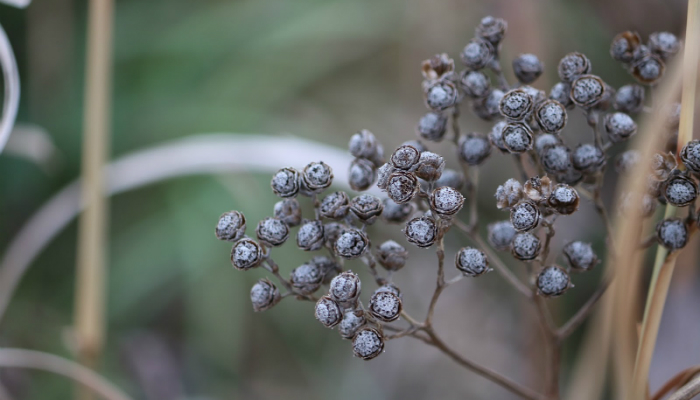Winter Repose

Wild Quinine
This time of year is when I reacquaint myself with all my botanical friends in their winter repose. Having cast off their flashy petals and dropped most of their foliage, they can be nearly unrecognizable.
The easiest to find, for me, is the Gray-headed Coneflower, with its rounded match-heads bobbing gently in the breeze. As winter wears on, the little brown heads are picked over by goldfinches and other birds, leaving narrow, pointed cores.
Cup Plant is another easy one, with their tall stature, sturdy, square stems and large leaves that tend to clasp the stems longer than those of many other plants. The seedheads, similar to other Silphiums, look a bit like dry, brown flowers themselves, until they are emptied of their nutritious cargo by hungry birds.
Goldenrods, especially early in winter, have their yellow flowers replaced with fluffy white, and can usually be distinguished by the shape of the inflorescences: Stiff Goldenrod in a tight, flattened clump; Showy Goldenrod in an upright plume, and Canada Goldenrod in a drooping spray.
The delicate stems of Tall Coreopsis may retain their narrow leaves for some time, now dried and curling closely; small rounded clusters of tightly-packed, flattened seeds float airily above, no longer surrounded by bright yellow petals.
Bee Balm, like the unrelated Cup Plant, also has a square stem but is much less rugged-looking. Its seed-heads are entirely different, looking like rounded clusters of tubes.
And finally, Wild Quinine has the decency to somewhat resemble a negative of its summertime blooms, the white, cotton-ball rounds changing to a dusty grayish-brown. Because it doesn’t sport flashy petals in the summer, its shape is largely unchanged in its winter dress.
Originally published on Sycamore Greenway Friends
Tags: Melissa Serenda, native plants

